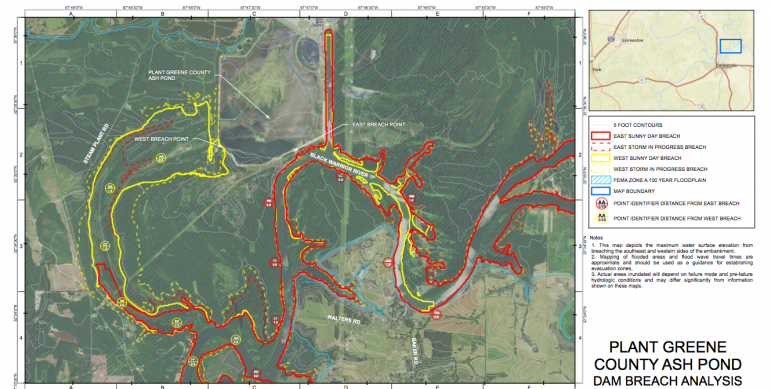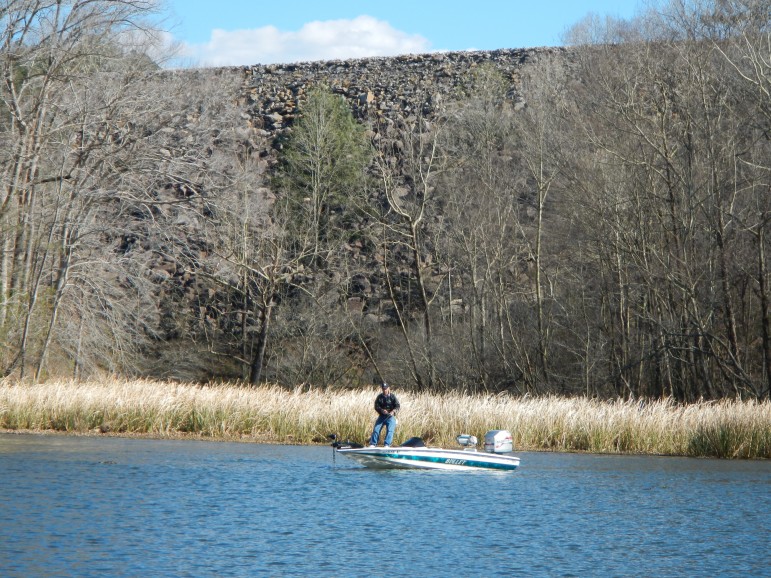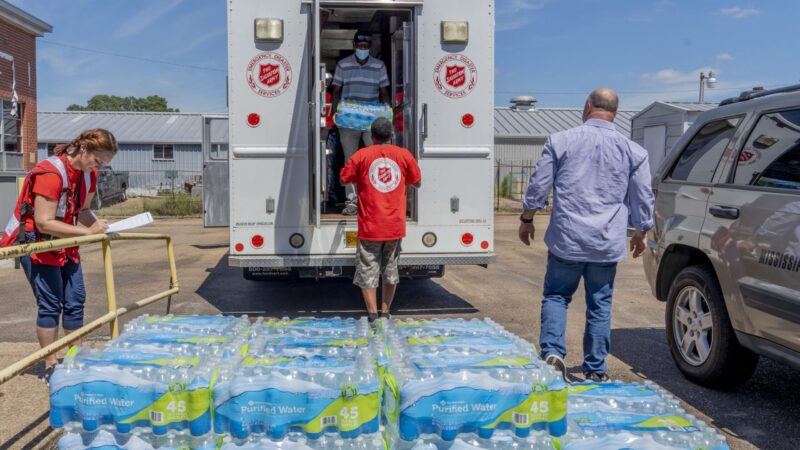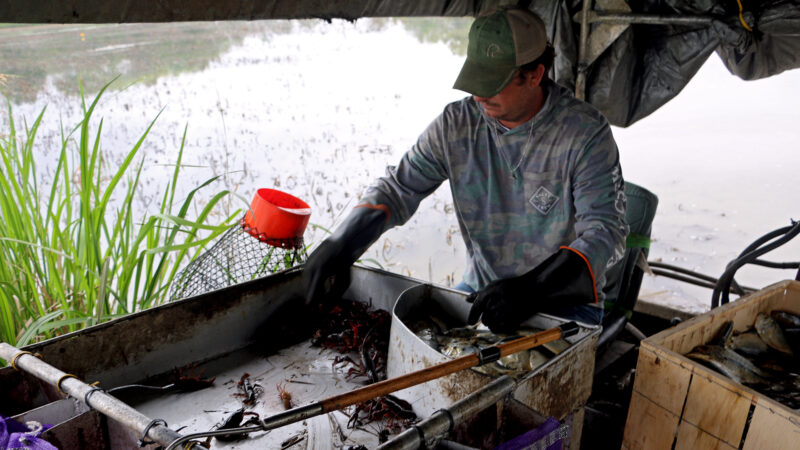Environmental Group Warns of Coal Ash Contamination
Alabama Power recently released coal ash inundation maps. They’re part of emergency action plans required by the Environmental Protection Agency. The maps are meant to show areas that would be affected if dams around coal-ash storage ponds were to breach. The utility says that’s never happened and there’s no imminent danger. But a local environmental group disagrees.
When coal is burned to make electricity, gases go into the air, but the solid stuff left over is coal ash. It’s pretty toxic: it contains substances like arsenic, lead, and mercury. Alabama Power has accumulated tons of coal ash, mixed it with water, and pumped it into a half-dozen unlined ponds or “impoundments” across the state.
Nelson Brooke of Black Warrior Riverkeeper worries any breach of those earthen dams “would be devastating because there’s so much volume stored behind the dam. This is where the power company has pumped their waste for decades.”
Three of the ponds border the Black Warrior River or main tributaries. Brooke says even without a breach, millions of gallons of pollution are going into state waterways every day. Alabama Power says it’s moving away from using the ponds, but plans to cover and leave the current ones. That’s not enough for Brooke. He wants the utility to remove the waste from unlined lagoons near rivers, and in general:
“If we find a problem that’s bad enough, and we can’t get the perpetrator or the regulatory agencies – state or federal – to enforce existing law, then we will resort to taking it to federal court.”
An Alabama Power spokesman emailed a statement calling Black Warrior Riverkeeper’s claims “misleading and inflammatory.” The statement goes on to say, “Riverkeeper implies there is some imminent danger to the river … There is not … The company has never had an impoundment failure.”
But Brooke says if a breach happened during a major downpour, let alone a storm as devastating as the one that recently inundated parts of Texas and other areas on the Gulf Coast, the contamination could be catastrophic.
Here is more of the emailed statement from Alabama Power spokesman Michael Sznajderman:
“The Riverkeeper news release is misleading and inflammatory on several levels:
“Riverkeeper implies there is some imminent danger to the river from our ash facility. There is not. All our ash impoundments are regularly inspected and have received the highest rating from EPA for continued safe and reliable operation. We have operated these facilities safely for decades and have never had an impoundment failure. Each impoundment is inspected thoroughly on an annual basis by qualified Southern Company inspectors with more frequent inspections (multiple times weekly) by plant personnel.
“Alabama Power announced in 2015 that, because of increasing federal regulations, the company planned to eventually close its six ash ponds. Based on the most recent data and analysis, the company has determined that the best, safest and most cost-effective course is to close, consolidate and cap these six facilities in-place at our generating facilities … Details about the specific closure plans at each facility are still being developed and could change over time. The safety and security of our customers and the community is our highest priority.”
Alabama’s racial, ethnic health disparities are ‘more severe’ than other states, report says
Data from the Commonwealth Fund show that the quality of care people receive and their health outcomes worsened because of the COVID-19 pandemic.
What’s your favorite thing about Alabama?
That's the question we put to those at our recent News and Brews community pop-ups at Hop City and Saturn in Birmingham.
Q&A: A former New Orleans police chief says it’s time the U.S. changes its marijuana policy
Ronal Serpas is one of 32 law enforcement leaders who signed a letter sent to President Biden in support of moving marijuana to a Schedule III drug.
How food stamps could play a key role in fixing Jackson’s broken water system
JXN Water's affordability plan aims to raise much-needed revenue while offering discounts to customers in need, but it is currently tied up in court.
Alabama mine cited for federal safety violations since home explosion led to grandfather’s death, grandson’s injuries
Following a home explosion that killed one and critically injured another, residents want to know more about the mine under their community. So far, their questions have largely gone unanswered.
Crawfish prices are finally dropping, but farmers and fishers are still struggling
Last year’s devastating drought in Louisiana killed off large crops of crawfish, leading to a tough season for farmers, fishers and seafood lovers.









